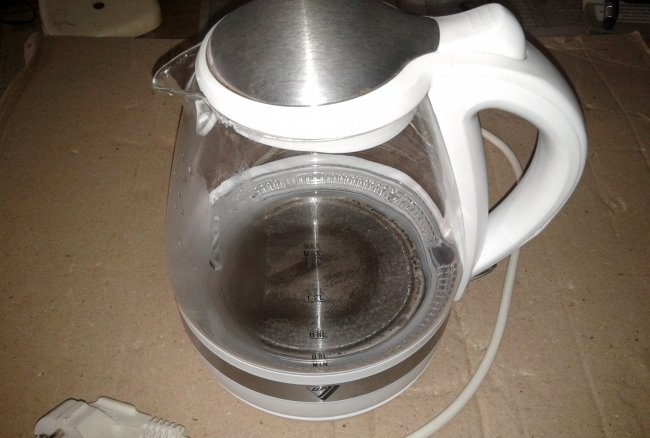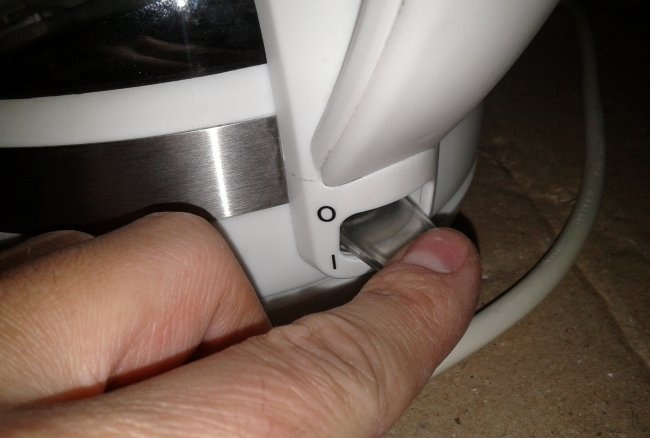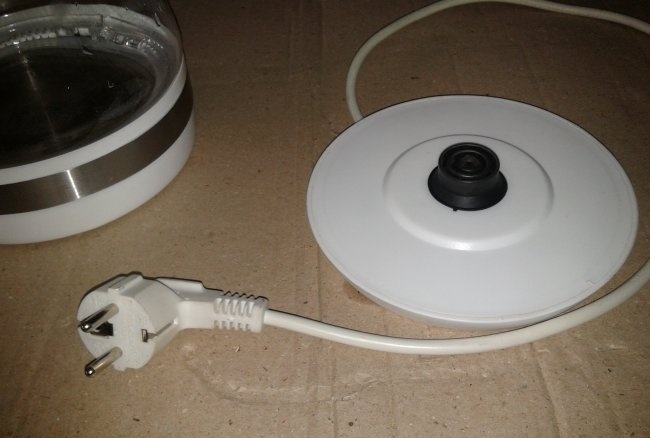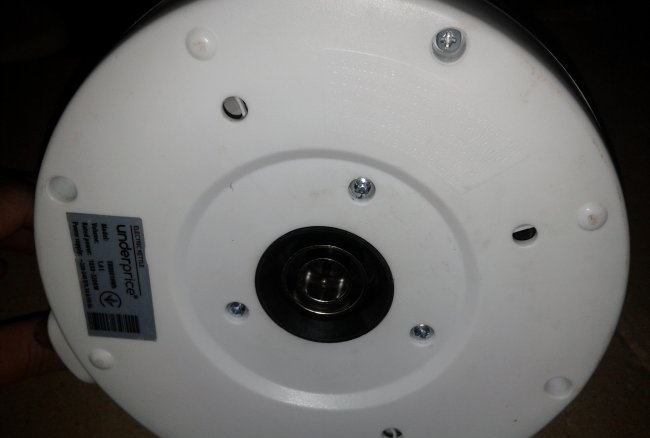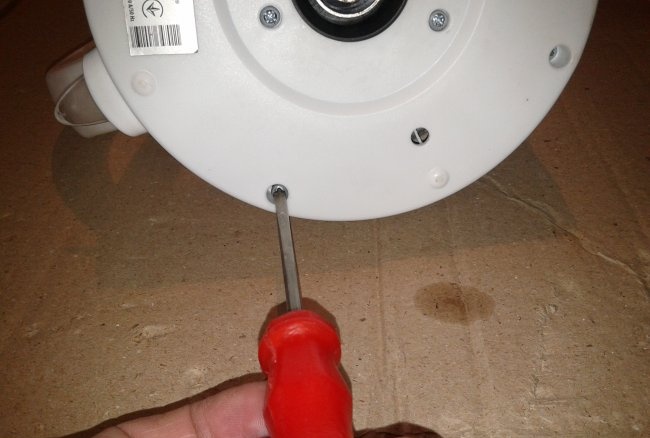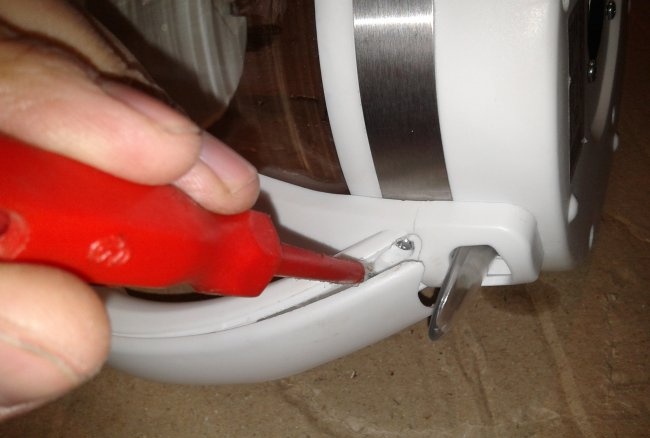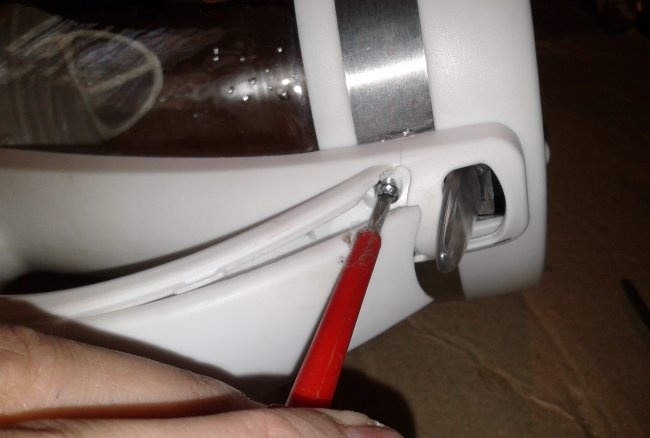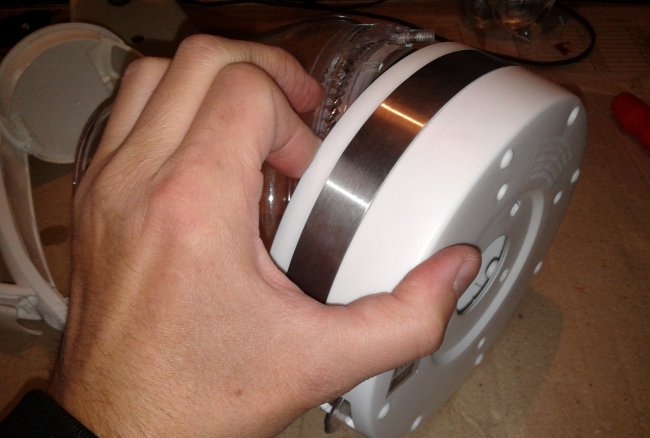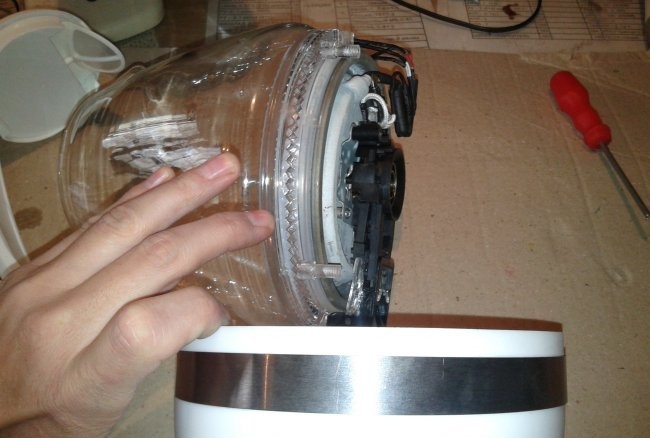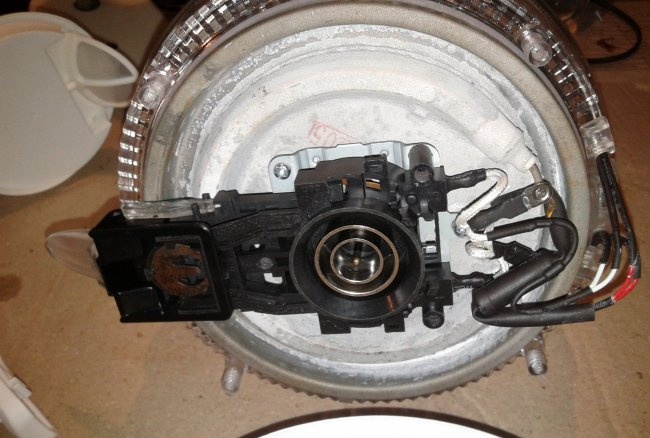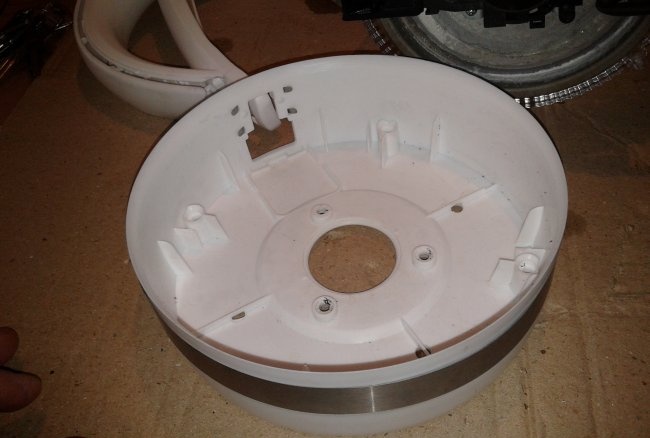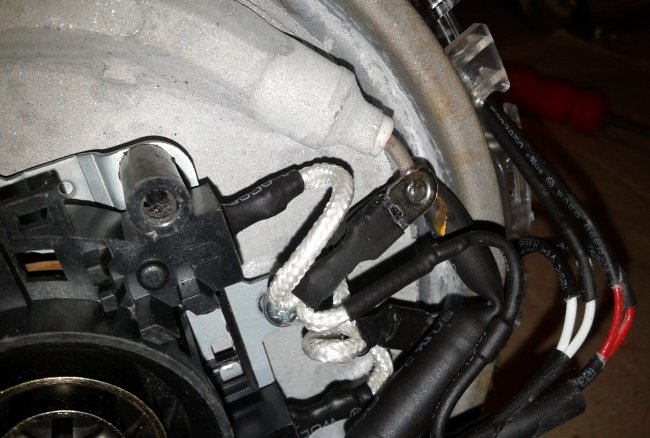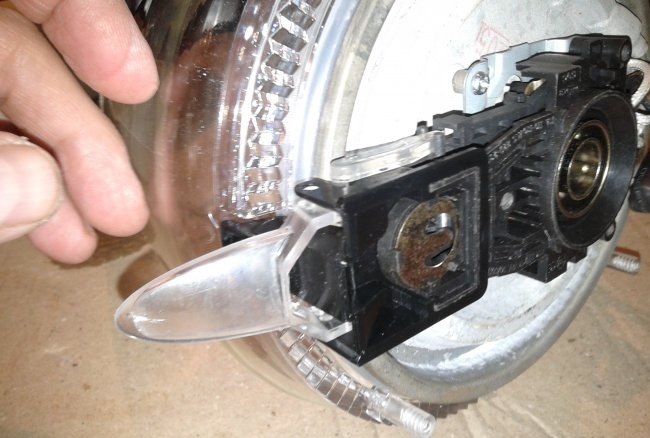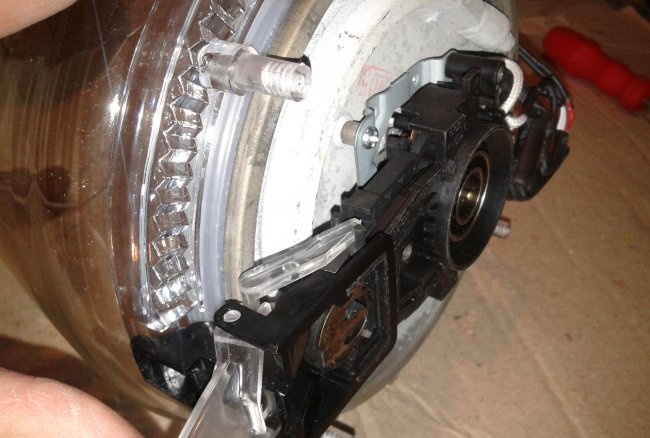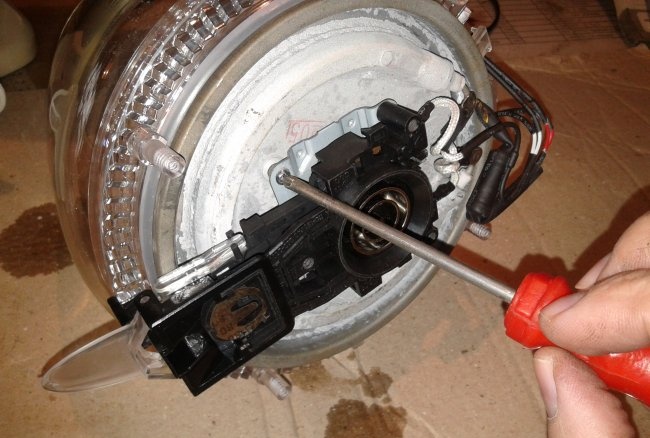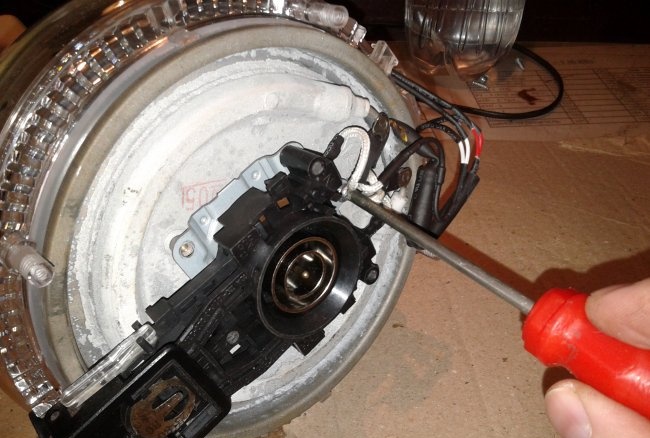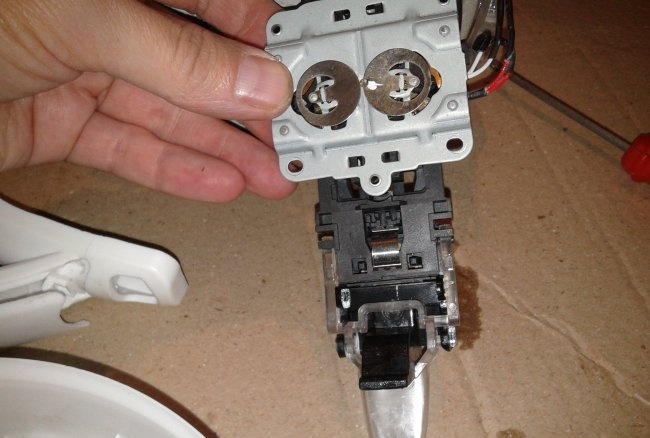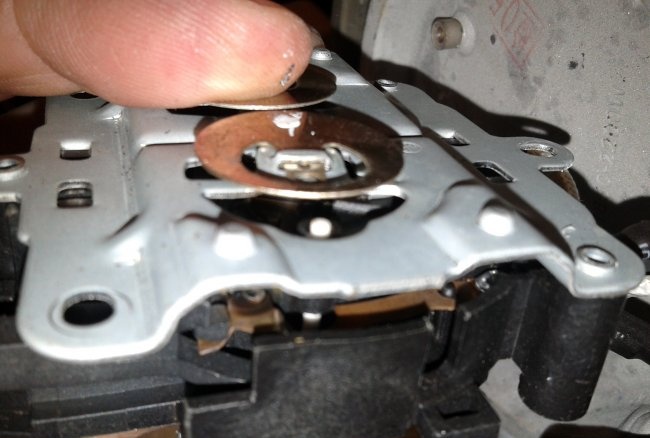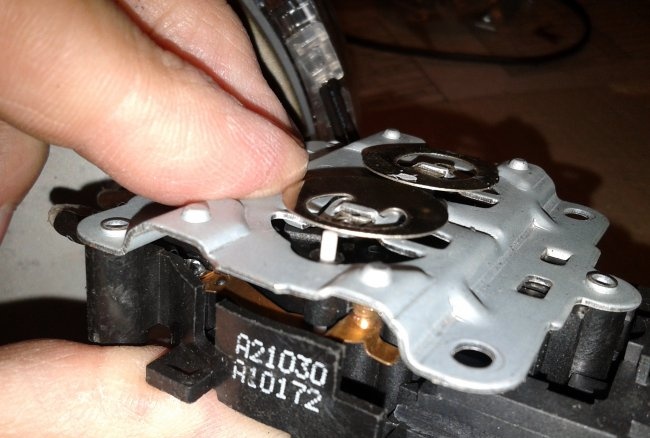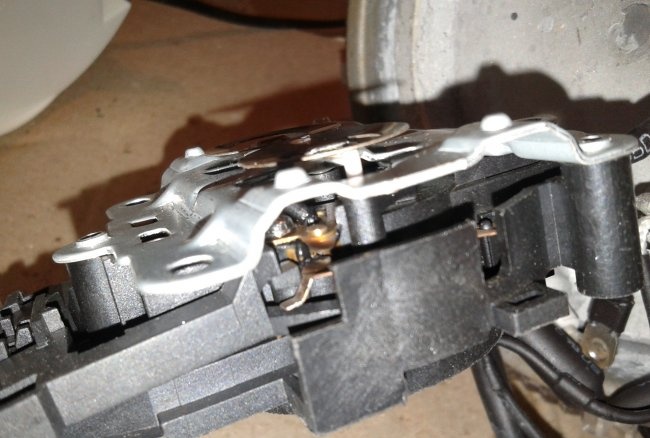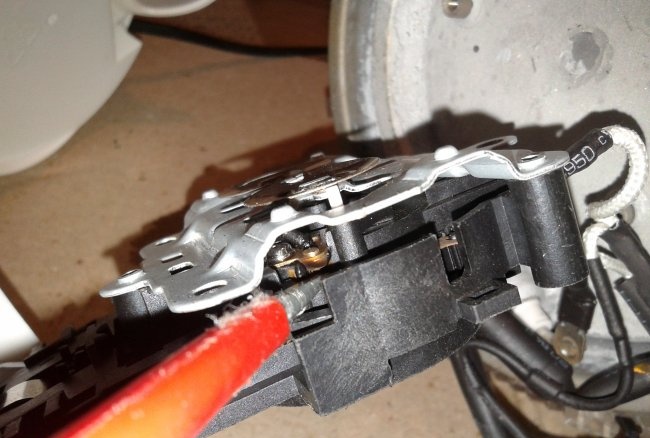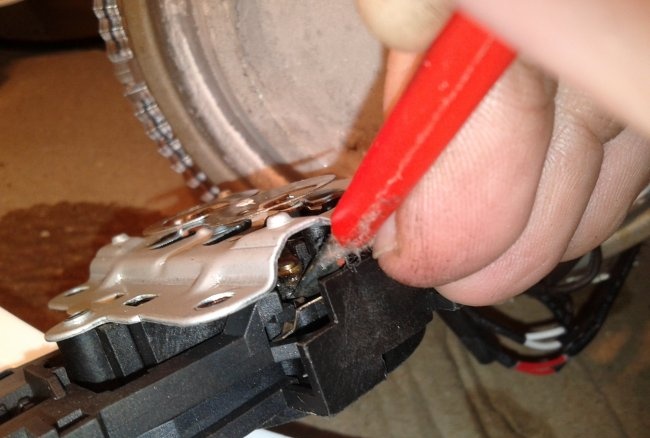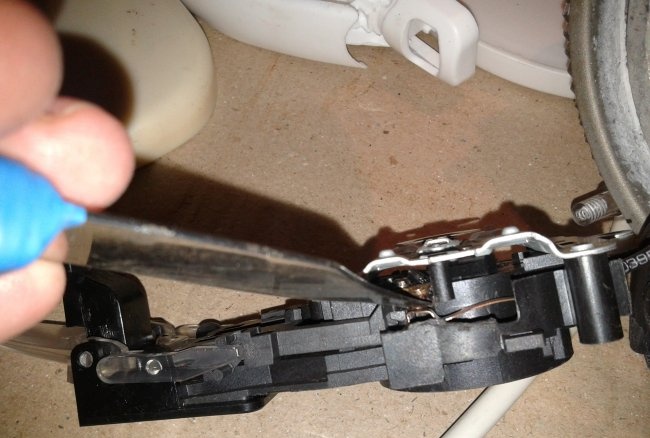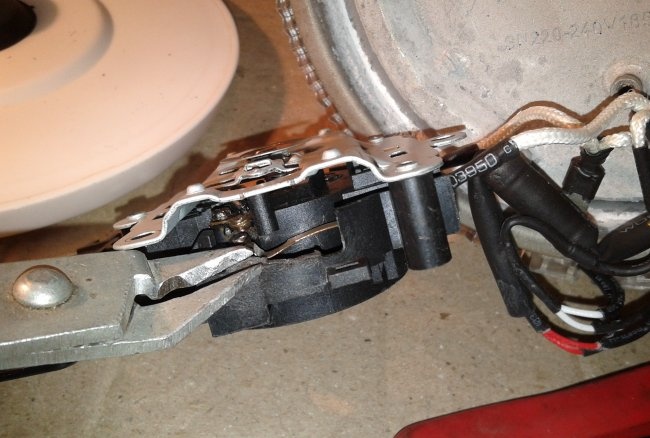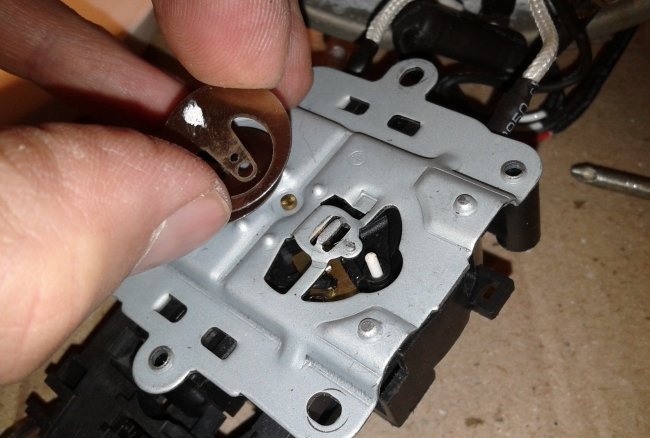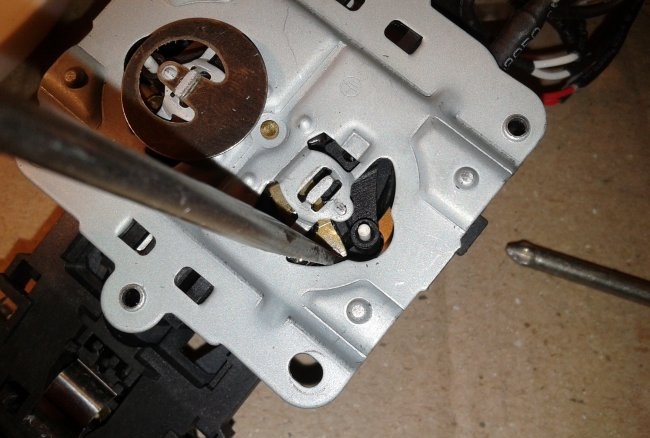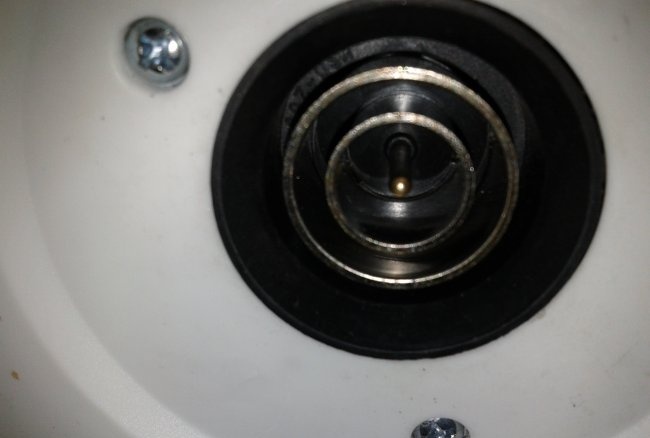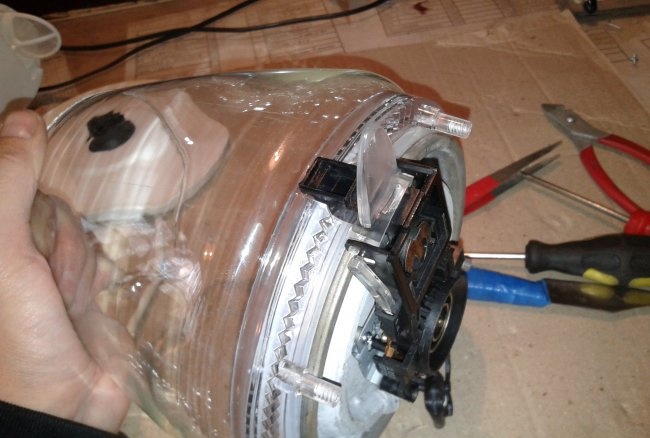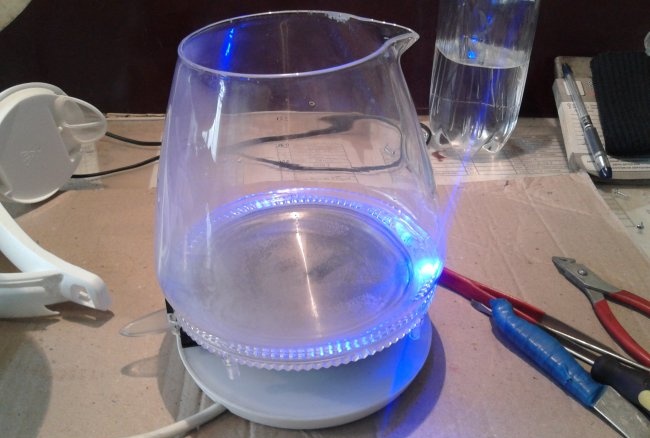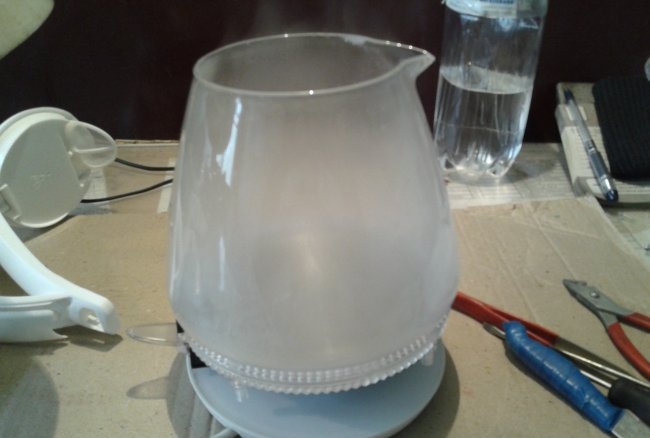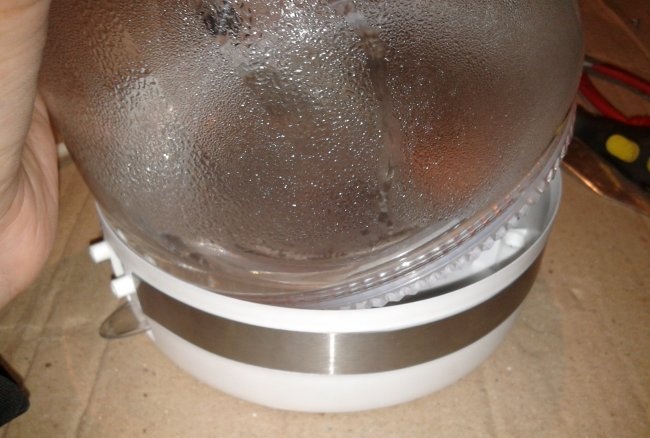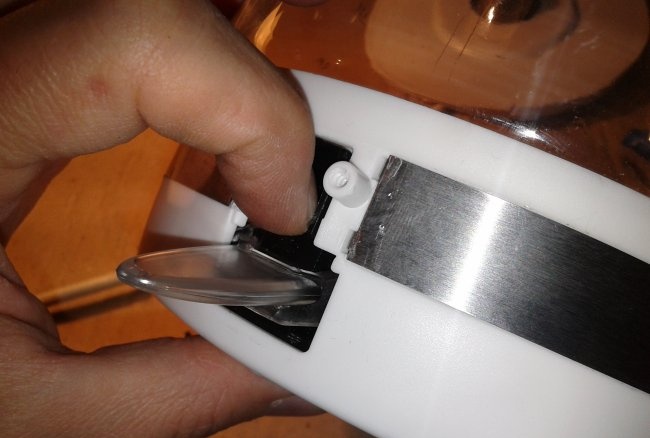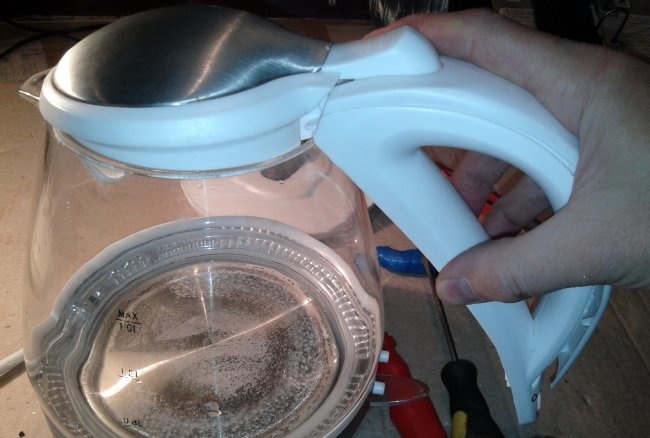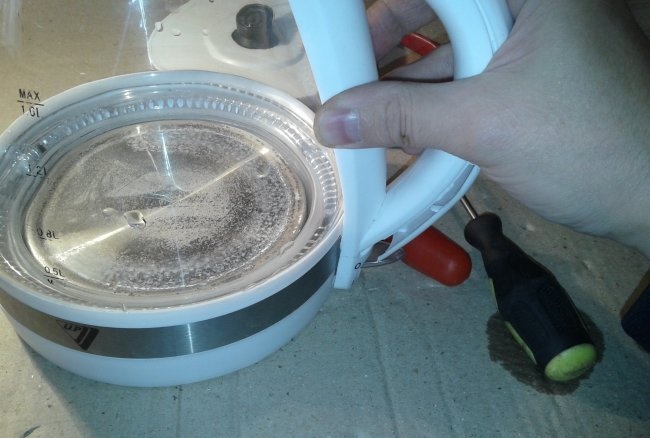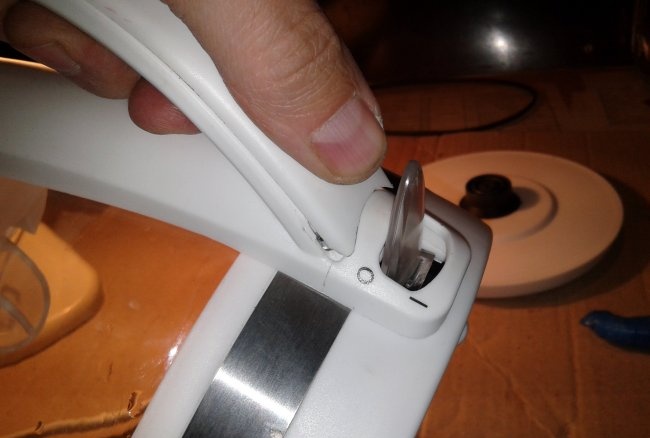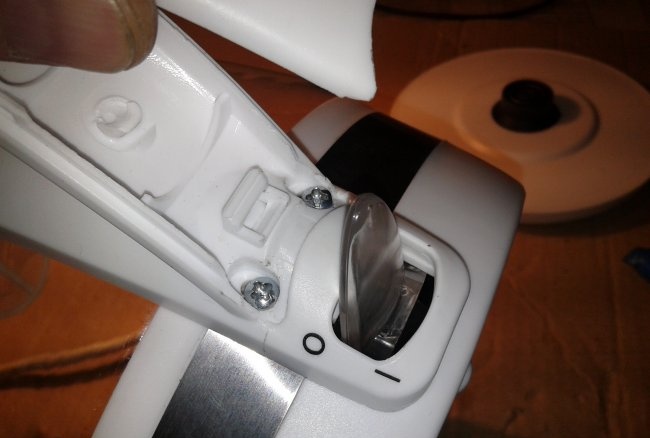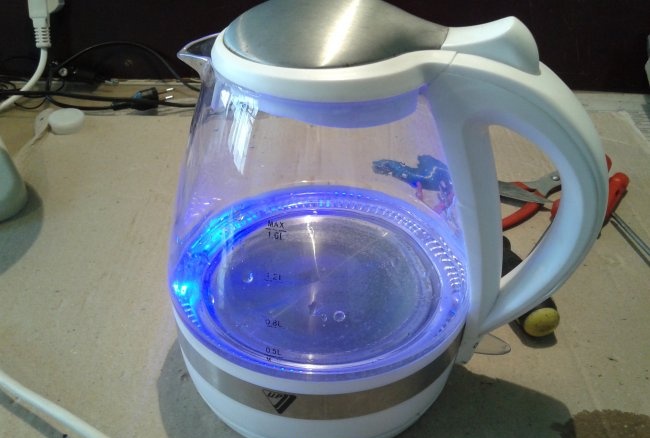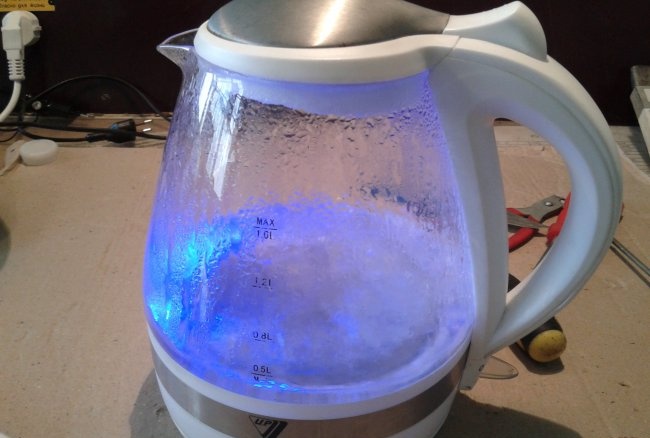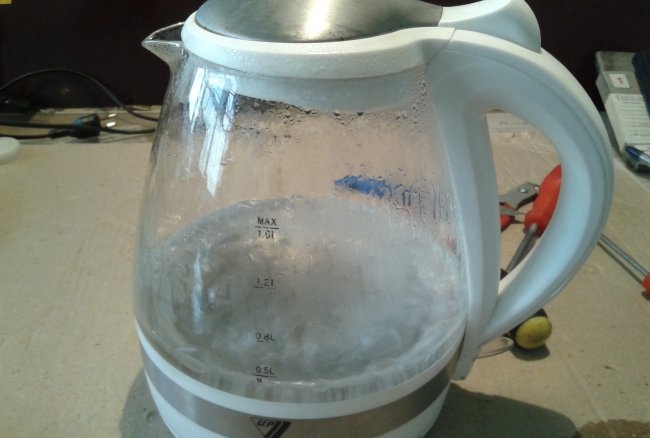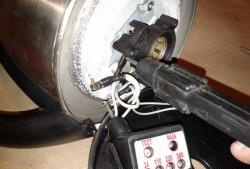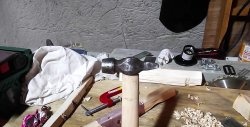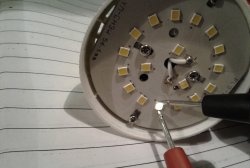Electric kettle repair
Drinking a cup of hot tea or coffee is always pleasant and healthy, especially when it’s cold or raining outside. Some people simply cannot imagine starting the day without a cup of invigorating coffee.
Well, an electric kettle will help to heat the water for these drinks, and you can’t do without it. Unless, of course, you have a gas stove or an expensive coffee maker at hand.
Therefore, the breakdown of an electric kettle can negatively affect both the productivity of work and the quality of life of such people.
It is worth noting that electric kettles occupy the main, leading place as devices for heating water in the workplace.
Therefore, it would be useful to know the main possible breakdowns of teapots and methods for eliminating them.
One such kettle will be discussed in this article.
One fine day, this device stopped heating the water, and the power lever stubbornly refused to go to the “on” position.
When I tried to do this, it was simply thrown into the “off” position, that is, it acted like a return spring. Also, when I forcibly held the lever in the on position, nothing happened. The heater did not heat up, the device operation indicator did not light up. The indicator in this type of kettle is the blue LED backlight of the glass bowl.
Testing the cord and stand did not yield anything; they turned out to be in good order.
But this was not so important, because it was clear that the problem was 90% in the shutdown lever and its parts. After all, it is its contacts that take the main “blow” of the electric arc when the device is turned off.
So, you can start disassembling. To do this, it is enough to have a Phillips screwdriver.
Place the kettle on its side or bottom up and unscrew all the screws around the perimeter of the base.
These are three screws inside the circle and four outside.
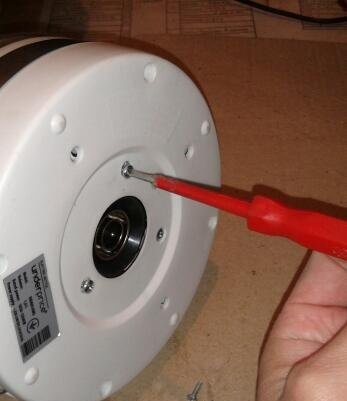
We put the screws separately by type so that during assembly we do not spoil the threads they have already cut in the body of the kettle by using the wrong screw.
Next, to get to the side screws, which also hold the bottom of the kettle, you need to use something sharp (screwdriver, knife) to pry up the cover from below and slightly pull it towards you, thereby releasing the latches.
So, free access to these screws will be possible.
Move the cover slightly to the side and unscrew the hidden fastening screws.
Then, clasping the lower part of the kettle with your hand, carefully remove it by threading it through the “foot” of the switch.
There are no elements on the sole itself that require detachment, so it is removed and set aside.
Now, you can see all the “stuffing” of our kettle, as well as get to the necessary components for diagnosis and repair.
There are two pairs of thin wires coming from the electrical module with which you should be as careful as possible. They feed two LED The backlight of the glass bowl and frequent bending can be significantly damaged. Therefore, when removing and inspecting this module, it is advisable to try not to bend these places again.
Next, look at the switch control knob.Several levers extend from it, which act on the contacts, thereby turning them on and off.
In any case, to get even further and perform a thorough inspection of the contacts, you need to unscrew the screws securing the module and remove it.
At the bottom of the module there are bimetallic plates, which, in contact with the heating element, automatically disconnect the device from the network when it boils or overheats.
A ceramic rod extends from the plates, and it then presses on the contacts when the bimetal bends, thereby breaking the circuit.
The first plate turns off the contact when it boils, the second - when the base is very overheated, for example, when there is no water in the kettle, or when the first plate breaks.
Carefully examining the first plates with contacts, it was noticed that they were burnt.
Also, when trying to connect the contacts by turning on the control lever, it was noticed that this did not happen due to insufficient bending of the contact plates.
Doing this directly with a screwdriver, it became clear that the movable plates had become motionless due to the melted plastic, which flowed down and formed a bulge between the lower and upper contacts, preventing their connection.
Using a thin screwdriver, the bulge was removed and the contacts were cleaned with a thin knife.
To make cleaning easier, you can use pliers to bite off the plastic edge opposite the contacts. This will make it possible to continue cleaning without much effort or interference.
If the moving contact still does not connect to the fixed one when turned on, you need to lower the second one slightly. It will be convenient to do this by first removing the bimetallic plate, moving it slightly to the side.
Next, we place the module on a flat surface and, placing the tip of a screwdriver on top of the contact, make several short blows with our hand on its handle.
After that, we check the short circuit with a tester when turned on.
By the way, this can be done by connecting the ends of the tester to two ring contacts on the connecting socket. The center pin is the "ground" or body of the kettle. When the switch is on and the heater is working, these contacts should be short-circuited.
If the device does not show the connection, repeat the bending procedure again until the contacts are securely closed.
Do not hit the handle of the screwdriver with a hammer, otherwise you may simply break the plate and lose your last hope of bringing the kettle back to life.
At the moment of bending, you can pull out the ceramic rod so as not to accidentally break it. Afterwards, you need to insert it back and install the plate.
Now, screw the module to the base of the heater and place the kettle on the stand. Having filled the kettle with some water, plug the plug into the socket and turn the switch to the “on” position.
If everything is done correctly, the water begins to boil under blue decorative lighting.
Next, we disconnect the plug and thread the glass lever through the cutout in the case, putting the plastic sole in its place.
When installing, a very important point is the correct joining of these two parts. As shown in the photo, when the lower part is supposedly inserted, you need to press the notch at the top of the lever with your finger.
A click occurs and the two parts are joined correctly and completely. If this is not done, when assembly is completed, the power button will not turn on again, because the lever system will rest against the sole and prevent it from moving. You will have to disassemble the entire kettle again, which is very undesirable.
Now, let's install the handle.
The first thing to do is to get the top of the glass bowl into the groove between the handle and the top lid.
Next, press the handle to the body.
Using the screws under the cover, we secure the handle.
We snap the cover and check the tightness of the connection between the glass and plastic parts along the entire circumference of the bowl.
If everything is connected correctly and tightly and there are no gaps, turn the kettle over and tighten the screws on the base.
Add water to the bowl and turn on the kettle again.
The photo shows that the device is working and the water is boiling.
Also, the kettle should turn itself off. This is what happens.
We can assume that the repair was successful and this wonderful device will again and again please its owners with an invigorating, warming drink.
Well, an electric kettle will help to heat the water for these drinks, and you can’t do without it. Unless, of course, you have a gas stove or an expensive coffee maker at hand.
Therefore, the breakdown of an electric kettle can negatively affect both the productivity of work and the quality of life of such people.
It is worth noting that electric kettles occupy the main, leading place as devices for heating water in the workplace.
Therefore, it would be useful to know the main possible breakdowns of teapots and methods for eliminating them.
One such kettle will be discussed in this article.
One fine day, this device stopped heating the water, and the power lever stubbornly refused to go to the “on” position.
When I tried to do this, it was simply thrown into the “off” position, that is, it acted like a return spring. Also, when I forcibly held the lever in the on position, nothing happened. The heater did not heat up, the device operation indicator did not light up. The indicator in this type of kettle is the blue LED backlight of the glass bowl.
Testing the cord and stand did not yield anything; they turned out to be in good order.
But this was not so important, because it was clear that the problem was 90% in the shutdown lever and its parts. After all, it is its contacts that take the main “blow” of the electric arc when the device is turned off.
So, you can start disassembling. To do this, it is enough to have a Phillips screwdriver.
Place the kettle on its side or bottom up and unscrew all the screws around the perimeter of the base.
These are three screws inside the circle and four outside.

We put the screws separately by type so that during assembly we do not spoil the threads they have already cut in the body of the kettle by using the wrong screw.
Next, to get to the side screws, which also hold the bottom of the kettle, you need to use something sharp (screwdriver, knife) to pry up the cover from below and slightly pull it towards you, thereby releasing the latches.
So, free access to these screws will be possible.
Move the cover slightly to the side and unscrew the hidden fastening screws.
Then, clasping the lower part of the kettle with your hand, carefully remove it by threading it through the “foot” of the switch.
There are no elements on the sole itself that require detachment, so it is removed and set aside.
Now, you can see all the “stuffing” of our kettle, as well as get to the necessary components for diagnosis and repair.
There are two pairs of thin wires coming from the electrical module with which you should be as careful as possible. They feed two LED The backlight of the glass bowl and frequent bending can be significantly damaged. Therefore, when removing and inspecting this module, it is advisable to try not to bend these places again.
Next, look at the switch control knob.Several levers extend from it, which act on the contacts, thereby turning them on and off.
In any case, to get even further and perform a thorough inspection of the contacts, you need to unscrew the screws securing the module and remove it.
At the bottom of the module there are bimetallic plates, which, in contact with the heating element, automatically disconnect the device from the network when it boils or overheats.
A ceramic rod extends from the plates, and it then presses on the contacts when the bimetal bends, thereby breaking the circuit.
The first plate turns off the contact when it boils, the second - when the base is very overheated, for example, when there is no water in the kettle, or when the first plate breaks.
Carefully examining the first plates with contacts, it was noticed that they were burnt.
Also, when trying to connect the contacts by turning on the control lever, it was noticed that this did not happen due to insufficient bending of the contact plates.
Doing this directly with a screwdriver, it became clear that the movable plates had become motionless due to the melted plastic, which flowed down and formed a bulge between the lower and upper contacts, preventing their connection.
Using a thin screwdriver, the bulge was removed and the contacts were cleaned with a thin knife.
To make cleaning easier, you can use pliers to bite off the plastic edge opposite the contacts. This will make it possible to continue cleaning without much effort or interference.
If the moving contact still does not connect to the fixed one when turned on, you need to lower the second one slightly. It will be convenient to do this by first removing the bimetallic plate, moving it slightly to the side.
Next, we place the module on a flat surface and, placing the tip of a screwdriver on top of the contact, make several short blows with our hand on its handle.
After that, we check the short circuit with a tester when turned on.
By the way, this can be done by connecting the ends of the tester to two ring contacts on the connecting socket. The center pin is the "ground" or body of the kettle. When the switch is on and the heater is working, these contacts should be short-circuited.
If the device does not show the connection, repeat the bending procedure again until the contacts are securely closed.
Do not hit the handle of the screwdriver with a hammer, otherwise you may simply break the plate and lose your last hope of bringing the kettle back to life.
At the moment of bending, you can pull out the ceramic rod so as not to accidentally break it. Afterwards, you need to insert it back and install the plate.
Now, screw the module to the base of the heater and place the kettle on the stand. Having filled the kettle with some water, plug the plug into the socket and turn the switch to the “on” position.
If everything is done correctly, the water begins to boil under blue decorative lighting.
Next, we disconnect the plug and thread the glass lever through the cutout in the case, putting the plastic sole in its place.
When installing, a very important point is the correct joining of these two parts. As shown in the photo, when the lower part is supposedly inserted, you need to press the notch at the top of the lever with your finger.
A click occurs and the two parts are joined correctly and completely. If this is not done, when assembly is completed, the power button will not turn on again, because the lever system will rest against the sole and prevent it from moving. You will have to disassemble the entire kettle again, which is very undesirable.
Now, let's install the handle.
The first thing to do is to get the top of the glass bowl into the groove between the handle and the top lid.
Next, press the handle to the body.
Using the screws under the cover, we secure the handle.
We snap the cover and check the tightness of the connection between the glass and plastic parts along the entire circumference of the bowl.
If everything is connected correctly and tightly and there are no gaps, turn the kettle over and tighten the screws on the base.
Add water to the bowl and turn on the kettle again.
The photo shows that the device is working and the water is boiling.
Also, the kettle should turn itself off. This is what happens.
We can assume that the repair was successful and this wonderful device will again and again please its owners with an invigorating, warming drink.
Similar master classes
Particularly interesting
Comments (0)

